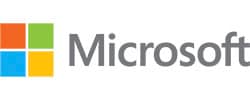DIGITAL WHITEBOARDS: Some offices are equipped with digital whiteboard technology, enabling users to easily brainstorm, sketch out ideas, and incorporate data from web and productivity applications. However, organizations need to make sure that users at home can access the technology and contribute meaningfully from remote locations.
STANDARDIZING EXPERIENCES: As organizations attempt to seamlessly integrate in-office and remote workers, they may look to standardize their software and hardware offerings onto fewer platforms. Streamlining not only helps to reduce costs but can also enhance security by limiting the number of products that need to be patched, maintained and monitored.
REMOTE DEVICE SETUP: Many organizations now have virtual IT help desks that can set up employee devices remotely and ship them to users at home. At the same time, IT teams also must support enterprise applications running on users’ personal devices and ensure that those are secure.
AUTOMATED TOOLS: By leveraging artificial intelligence tools such as chatbots, organizations can shrink wait times and improve accuracy, delivering a superior customer experience. Automated tools can handle routine inquiries and enable workers to focus on the most critical calls. However, many organizations lack the knowledge and skills to take full advantage of these capabilities.
The Value of Managed Collaboration
CDW managed collaboration services offer cost-effective solutions that enhance employee communication and collaboration, ensuring seamless adaptation to organizational growth and increased user adoption.
We take on monitoring, maintenance, incident management and configurations, providing expertise to help eliminate resource constraints. This allows organizations to stay prepared for the future and focus on their core goals while we handle essential tasks.
Decreased Management Burden: Supporting a collaboration environment internally often requires a dozen or more staffers. Organizations that have adopted Managed Collaboration Anywhere from CDW have been able to redeploy up to two-thirds of their internal collaboration support team members, tasking them with higher-value projects.
Support for Multiple Platforms: Many organizations continue to support multiple collaboration platforms, while others are consolidating platforms. In either case, CDW’s cross-vendor expertise can help reduce complexity and confusion. Additionally, advice from CDW’s solution architects ensures that collaboration environments are optimized for each company’s needs.
Faster Service: With collaboration platforms now serving as the hubs of the digital workplace, employees cannot wait for busy IT staffers to help them get going. The simple processes of moving, adding, changing or deleting users or services can slow down both IT and business operations. Handing over these tasks to CDW prevents this bottleneck.
Smooth Transition to the Cloud: Companies with aging on-premises infrastructure are often looking to adopt collaboration solutions hosted in the public cloud. CDW’s experts can help organizations make the move, meet their deadlines and receive ongoing support for multiple systems during the transition.









